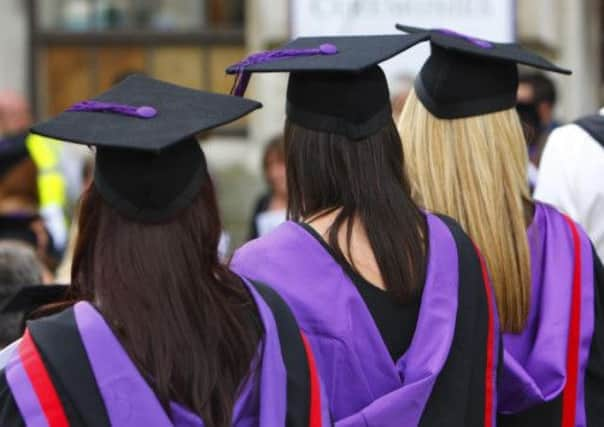Wealth gap over Oxbridge places underscored


Tables compiled by the Department for Education (DfE) show that not a single pupil across 15 education authority areas in the region who was in receipt of free school meals went on to either of the country’s top two higher education establishments.
The figures, which show how pupils who finished sixth form in 2010 fared, also reveal that richer pupils both in Yorkshire and nationally are twice as likely to go to one of the UK’s top universities than those from the poorest homes.
Advertisement
Hide AdAdvertisement
Hide AdHowever it also shows that the percentage of post-16 pupils on free school meals – a key measure of poverty – are only slightly less likely to go to any university than the rest of the country.
Across the country 46 per cent of pupils on free school meals went on to higher education compared with 48 per cent of their peers.
Just four per cent of those eligible for free dinners both in the country and in Yorkshire went to an elite research-led Russell Group university – making them half as likely to go as their more affluent classmates.
Both the national and Yorkshire figure for pupils not on free school meals going to Russell Group universities was nine per cent.
Advertisement
Hide AdAdvertisement
Hide AdNationally, children from poorer homes were 10 times less likely to get to Oxford and Cambridge than their peers.
Figures show 0.1 per cent of free school meals pupils went to Oxford or Cambridge, compared to one per cent of those not on free school meals. In Yorkshire, the situation was even worse with all 15 education authorities have nobody on free school meals taking up a place at Oxbridge.
Other figures showed Kirklees had Yorkshire’s highest proportion of pupils on free school meals going on to a university described as being in the top third in the country.
In 2010-11 the district had 12 per cent of its free school meals pupils achieving this compared with a Yorkshire wide average of six per cent. It also had the highest rate of poorer pupils going to a Russell Group institution – with 11 per cent compared to a regional figure of four per cent. It was one of just four authorities across the country where at least 10 per cent of free school pupils went to one of the 20 Russell Group universities, which includes Leeds, Sheffield and York.
Advertisement
Hide AdAdvertisement
Hide AdBut in 16 other areas, not a single pupil went to one of these universities, the DfE said.
These local authorities are Merton, Sandwell, North Somerset, South Gloucestershire, East Riding of Yorkshire, North East Lincolnshire, Milton Keynes, East Sussex, Portsmouth, Southampton, Bracknell Forest, West Berkshire, Reading, Halton, Isle of Wight and Northumberland.
The figures also show that nationally, the same proportions of pupils on free school meals go on to do an apprenticeship at age 16 and 18 as those not on free school meals.
A DfE spokesman said: “These statistics underline, yet again, the gap between the achievement of children from poorer backgrounds, and their better-off peers. Too often the poorest children are left with no choice but the worst schools while the rich can send their children to private school or move house into the catchment area of a good school.”
Advertisement
Hide AdAdvertisement
Hide AdHe said the Government was setting up free schools to give parents more choice, turn round failing schools and raise teaching standards.
Wendy Piatt, director general of the Russell Group, said: “Our universities are committed to ensuring our doors are wide open to talented and able students from all backgrounds, provided they have the ability, potential and determination to succeed.
“About one in three Russell Group students get a bursary or scholarship and we invest millions every year in outreach and related activities.
“But we can’t do this alone. The root causes of under-representation of students from poorer backgrounds at leading universities include underachievement in schools.